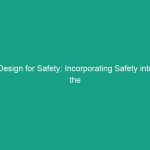Introduction
As the summer months approach, the risk of heat-related illnesses in the workplace increases significantly. Health, Safety, and Environment (HSE) practices are crucial in mitigating these risks and ensuring the well-being of all employees. Understanding the importance of preventing heat-related illnesses is essential for maintaining a safe working environment, especially in industries where outdoor work is prevalent. This article will explore effective strategies, regulatory frameworks, and Best Practices to help organizations safeguard their workers against the dangers of excessive heat.
Understanding Heat-Related Illnesses
Heat-related illnesses can range from mild to severe, leading to serious health complications and even fatalities if not addressed promptly. Common conditions include heat exhaustion, heat cramps, and heat stroke, each presenting unique symptoms and requiring different responses. Understanding these conditions is the first step in preventing heat-related illnesses in the workplace.
Types of Heat-Related Illnesses
There are several types of heat-related illnesses that employees may face during extreme weather conditions:
- Heat Exhaustion: Characterized by heavy sweating, weakness, and fatigue, heat exhaustion can develop into more severe conditions if not treated.
- Heat Cramps: These painful muscle contractions can occur after intense physical activity in the heat, often due to loss of electrolytes.
- Heat Stroke: This severe condition occurs when the body overheats, leading to symptoms like confusion, seizures, and loss of consciousness. It requires immediate medical attention.
Signs and Symptoms to Watch For
Recognizing the signs of heat-related illnesses is crucial for early intervention. Common symptoms include:
- Heavy sweating
- Weakness or dizziness
- Nausea or vomiting
- Rapid heartbeat
- Confusion or disorientation
Employers should train their staff to identify these symptoms and respond appropriately to protect their colleagues.
Regulatory Frameworks for Heat Safety
Various regulatory bodies have established guidelines to address heat-related illnesses in the workplace. Understanding these Regulations helps organizations comply and foster a safer working environment.
Occupational Safety and Health Administration (OSHA) Guidelines
osha has developed specific guidelines for managing heat stress, which include:
- Implementing a Heat Illness Prevention program.
- Providing Training to employees on recognizing heat-related illnesses.
- Encouraging hydration and frequent breaks in shaded areas.
These guidelines are essential in preventing heat-related illnesses and ensuring compliance with federal regulations.
State Regulations and Their Importance
In addition to federal regulations, many states have implemented their own heat Safety Standards. For example, California has specific requirements for outdoor workers, including:
- Access to shade for employees.
- Regular hydration breaks.
- Temperature monitoring and adjustment of work schedules based on heat conditions.
By adhering to these state regulations, employers can significantly reduce the incidence of heat-related illnesses.
Best Practices for Preventing Heat-Related Illnesses
Implementing Best Practices is crucial for organizations seeking to protect their workers from heat-related illnesses. Here are some effective strategies:
Hydration Strategies
Encouraging employees to stay hydrated is one of the most effective ways of preventing heat-related illnesses. Employers should:
- Provide easy access to water and electrolyte-replenishing drinks.
- Encourage regular water breaks, especially during strenuous activities.
- Educate employees on the importance of hydration before, during, and after work shifts.
Scheduled Breaks and Rest Periods
Implementing a schedule for breaks is essential. Employers should:
- Encourage frequent breaks in shaded or air-conditioned areas.
- Adjust work schedules to avoid the hottest parts of the day.
- Monitor employees who may be at higher risk for heat-related illnesses and provide additional breaks as needed.
Training and Awareness Programs
Education is key in preventing heat-related illnesses. Regular training sessions can help raise awareness about the dangers of heat stress and how to mitigate them. Programs should include:
- Information on recognizing the signs of heat-related illnesses.
- Training on the importance of hydration and rest.
- Emergency response Procedures for heat-related emergencies.
Challenges in Implementing Heat Safety Measures
Despite the importance of heat Safety, organizations may face several challenges in implementing effective measures. Understanding these challenges can help develop strategies to overcome them.
Compliance and Enforcement Issues
One significant challenge is ensuring compliance with heat safety regulations. Some employers may neglect to enforce the necessary measures due to:
- Cost concerns related to providing adequate resources.
- Lack of awareness or understanding of regulations.
- Inconsistent monitoring and enforcement of safety policies.
Therefore, fostering a culture of safety and accountability is essential for overcoming these obstacles.
Employee Resistance to Safety Measures
Some employees may resist changes to their work routines, believing that taking breaks or drinking water may hinder their productivity. To address this resistance, employers can:
- Educate employees about the health risks of heat exposure.
- Involve employees in developing safety initiatives, making them feel empowered and engaged.
- Provide incentives for following heat safety protocols, such as recognition programs or rewards.
Real-World Case Studies on Heat Safety
Examining real-world case studies can provide valuable insights into successful heat safety programs and the lessons learned from them. Let’s explore a couple of notable examples.
Case Study: Construction Industry
A large construction company implemented a comprehensive heat safety program that included:
- Regular training sessions on heat stress awareness.
- A buddy system where employees monitored each other for signs of heat-related illnesses.
- Access to cool rest areas and hydration stations.
As a result, the company reported a significant decrease in heat-related incidents, demonstrating the effectiveness of proactive measures.
Case Study: Agriculture Sector
In the agriculture sector, a farming cooperative adopted a heat illness Prevention plan that included:
- Adjusting work schedules to avoid peak heat hours.
- Providing training on recognizing heat-related symptoms.
- Offering incentives for workers who adhered to safety protocols.
The cooperative saw improved health outcomes and increased productivity, showcasing the Benefits of a robust heat safety program.
Future Trends in Heat Safety Management
As climate change continues to impact weather patterns, the need for effective heat safety management will only grow. Organizations must stay ahead of the curve by adopting innovative strategies and technologies.
Wearable Technology for Monitoring
Advancements in wearable technology can play a significant role in preventing heat-related illnesses. Devices that monitor body temperature, heart rate, and hydration levels can provide real-time data to both employees and employers. This information can help:
- Identify individuals at risk of heat stress.
- Prompt timely interventions.
- Enhance overall Workplace Safety.
Heat Stress Prediction Models
Employers can leverage data analytics and predictive modeling to assess heat stress risks in their work environments. By analyzing weather data, employee workloads, and health metrics, organizations can:
- Implement targeted safety measures during extreme heat events.
- Optimize work schedules to align with cooler conditions.
- Enhance training programs based on predictive insights.
Conclusion
In conclusion, preventing heat-related illnesses is a critical aspect of Workplace Safety that requires a proactive and comprehensive approach. By understanding the types of heat-related illnesses, adhering to regulatory frameworks, implementing best practices, and overcoming challenges, organizations can create a safer environment for their employees. Real-world case studies illustrate the effectiveness of these measures, while emerging trends in technology offer promising solutions for the future. It is imperative for organizations to prioritize heat safety this summer and beyond, ensuring the health and well-being of their workforce. Together, we can make strides in preventing heat-related illnesses and fostering a culture of safety.


